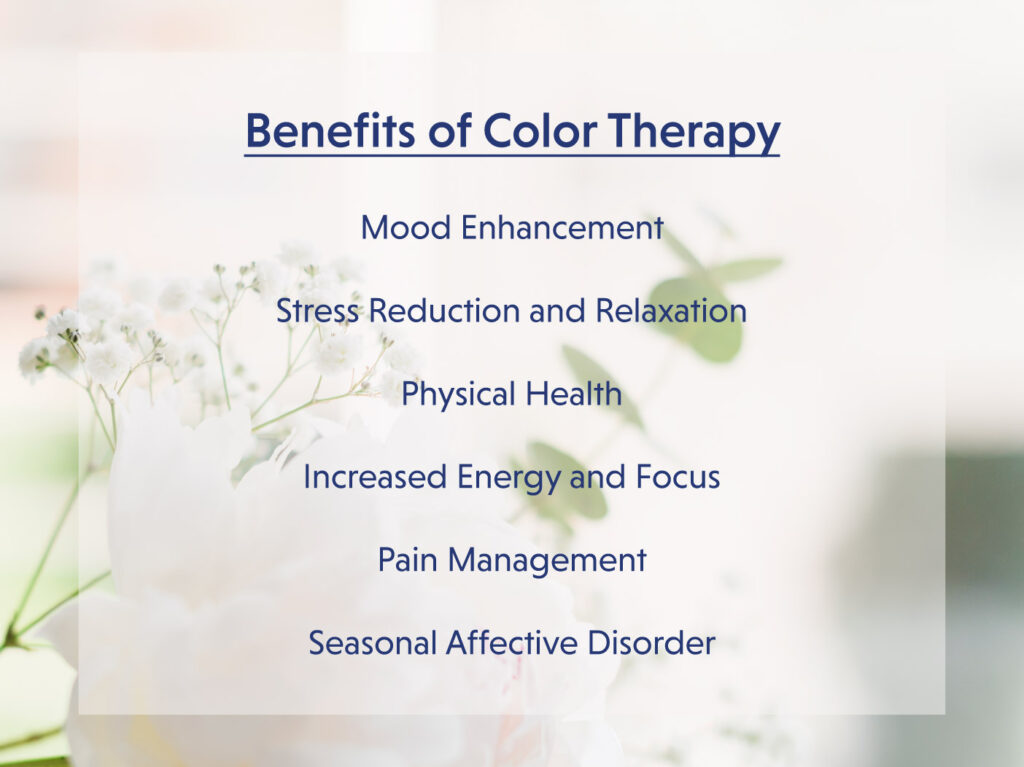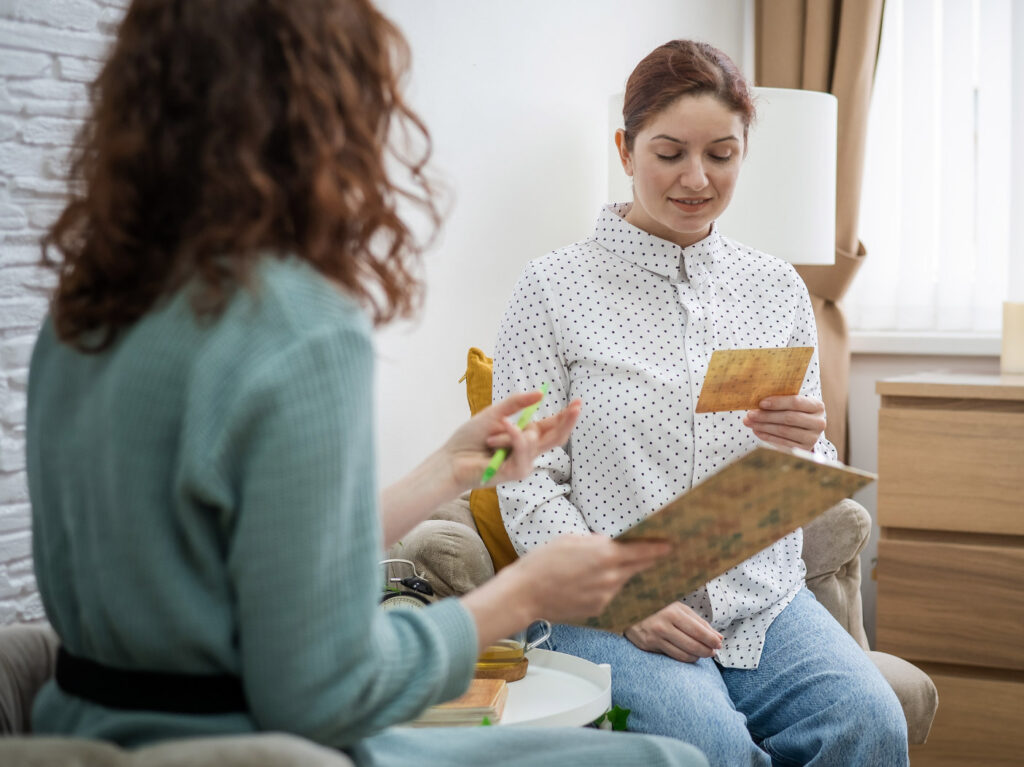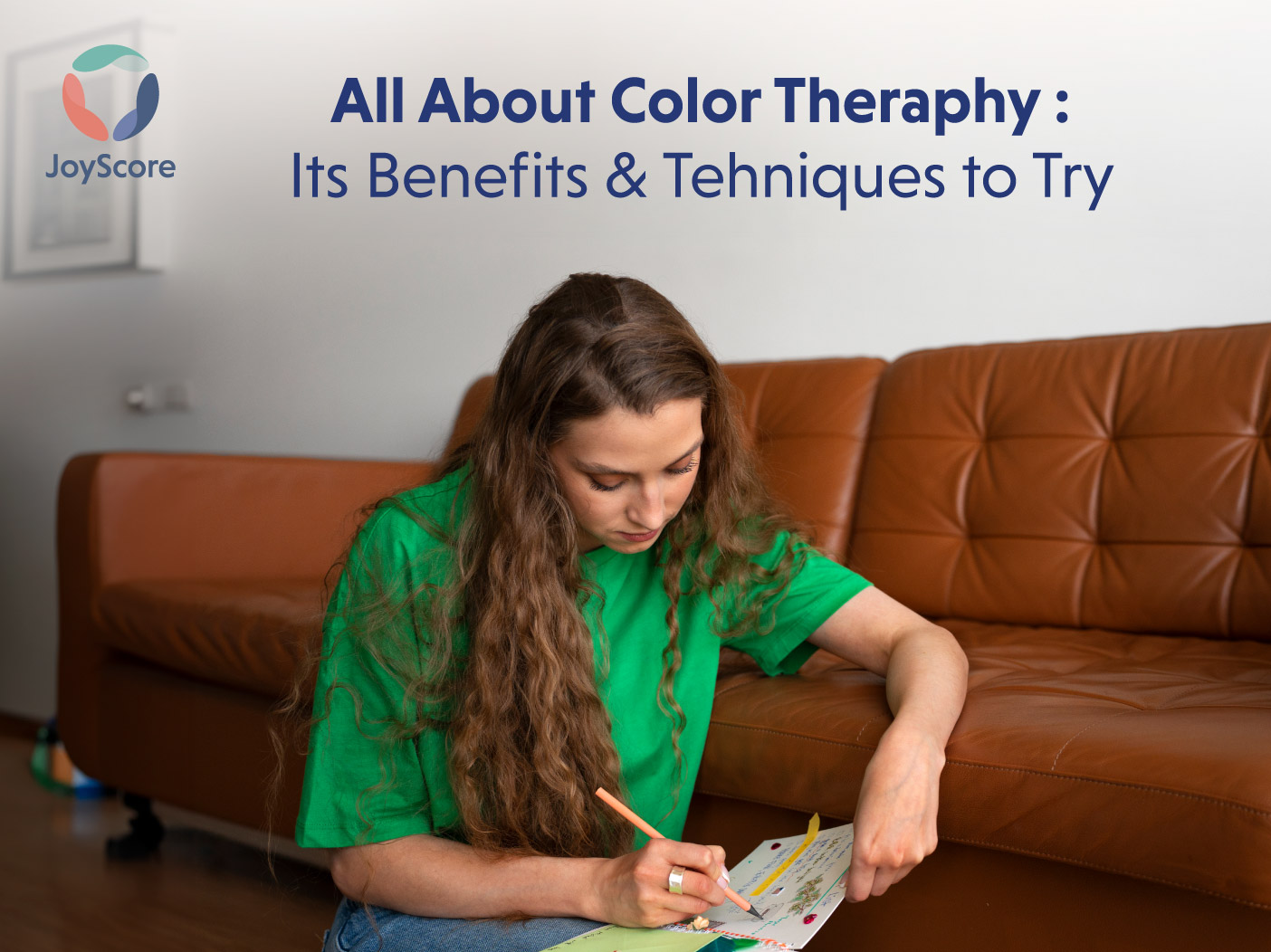Therapy, as highlighted by the JoyScore app, helps improve mental and emotional health with the guidance of a professional. It’s like having a guide to help you understand your feelings and handle tough situations. Whether you’re dealing with depression anxiety or just want to grow personally or improve relationships, therapy provides support. In a private setting, you talk through your thoughts and learn ways to cope with life’s challenges. It’s not just for those struggling; it’s beneficial for anyone wanting a happier, more fulfilled life.
There are various types of therapy: Cognitive Behavioral Therapy (CBT) helps change negative thoughts and behaviors, Psychodynamic Therapy addresses deep emotional issues from past experiences, Humanistic Therapy encourages personal growth, Couples and Family Therapy improves communication and resolves conflicts, and Group Therapy offers support from others facing similar issues.
What is Color Therapy?
Color therapy, also known as chromotherapy, uses different colors of light to influence your mood and health. The JoyScore app recommends incorporating color therapy into wellness practices to boost mental and emotional well-being.
Color therapy is based on the idea that colors can affect how we feel and even our health. Different colors have different energies and can impact us in various ways. Practitioners believe that certain colors can change our moods and feelings.
Benefits of Color Therapy
Color therapy offers numerous benefits for enhancing mental and emotional well-being:
- Mood Enhancement: Warm colors like yellow and orange are often associated with feelings of happiness and optimism, potentially improving mood and reducing symptoms of depression.
- Stress Reduction and Relaxation: Colors like blue, green, and indigo can reduce stress, anxiety, and lower blood pressure. Using these calming colors in your bedroom or wearing them to bed can promote relaxation and improve sleep quality.
- Physical Health: Some practitioners claim that color therapy can help with physical issues, such as pain management or inflammation, by directing certain colors to areas of the body.
- Increased Energy and Focus: Colors like red and orange are thought to be stimulating and could potentially boost energy levels, improve focus, and enhance motivation.
- Pain Management: Research suggests that certain colors, such as green, may aid in reducing the perception of pain and enhance the effectiveness of pain management techniques.
- Seasonal Affective Disorder (SAD): Light therapy utilizing specific colors, such as bright white or blue, is sometimes employed in the treatment of SAD, a type of depression linked to seasonal changes.

Types of Color Therapy
Color therapy involves using various colors, each with unique effects on the mind and body:
- Red: Stimulates energy, increases circulation, and promotes vitality. Used for treating fatigue, colds, and circulatory issues.
- Blue: Promotes calmness, reduces stress, and has a cooling effect. Helpful for anxiety, insomnia, and high blood pressure.
- Green: Balances emotions, promotes harmony, and is associated with growth and renewal. Used for heart-related issues, stress relief, and emotional balance.
- Yellow: Stimulates mental activity, promotes concentration, and enhances mood. Beneficial for digestive issues, depression, and improving focus.
- Orange: Combines the energy of red and the joy of yellow, promoting creativity and enthusiasm. Used to treat digestive disorders, enhance creativity, and uplift mood.
Violet/Purple: Associated with spiritual awareness, introspection, and mental balance. Used for treating mental and nervous disorders, enhancing meditation, and improving sleep quality.- Indigo: Promotes intuition, perception, and deep concentration. Helpful for eye, ear, and nose problems, and often used in meditation practices.
- White: Represents purity, clarity, and peace. Used to cleanse the body and mind and enhance overall balance and health.
How to Practice Color Therapy and Techniques to Support Mental Health
- Use Colorful Decor: Incorporate specific colors in your home or workspace to create your desired mood or energy level. Use yellows and oranges to stimulate creativity and uplift spirits, calming blue tones in bedrooms, and vibrant reds in dining areas to stimulate appetite and conversation.
- Wear Colors: Choose clothing and accessories based on the boost you need. For instance, wear red for confidence or glasses with colored lenses to uplift your mood. Utilizing the energies of different colors can enhance well-being and address mental and emotional challenges.
- Colored Light Exposure: Use colored bulbs to create supportive environments: blue for relaxation and yellow for energy. Colored lighting can also enhance mood and productivity in offices, gyms, and entertainment venues.
- Meditation with Color: Focus on a specific color during meditation, visualizing it and bathing your body in light to promote its effects. Integrate color therapy in yoga studios, spas, and meditation centers to support mental and emotional well-being.
- Healthcare Facilities: Use color schemes in hospitals, clinics, and wellness centers to promote relaxation, comfort, and a healing environment for patients and visitors.
- Art and Creative Therapy: Engage in art therapy activities that involve the use of color to express emotions, reduce stress, and enhance self-expression.
- Marketing and Branding: Employ color psychology in marketing and branding to evoke specific emotions in consumers. Use green to convey health and nature, or red to signify energy and excitement.
- Fashion and Personal Styling: If you work in the fashion industry or as a stylist, advise individuals on the use of specific colors in clothing and accessories to enhance mood, confidence, and personal expression.
- Light Boxes and Lamps: Use special lamps that emit light of different colors to treat specific conditions, such as seasonal affective disorder (SAD).

Can Color Therapy Be Used for Depression and Anxiety?
While not a standalone treatment, color therapy can be a complementary approach in managing symptoms of depression and anxiety. The soothing effects of colors like blue and green can help alleviate stress, a common contributor to both conditions. It’s important, however, to use color therapy alongside more conventional treatments recommended by health professionals, such as medication or psychotherapy.
Conclusion
Color therapy offers a creative and supplementary method to enhance well-being and address various mental and emotional challenges. By understanding and utilizing the energies associated with different colors, individuals can explore additional avenues toward achieving mental and physical harmony.



